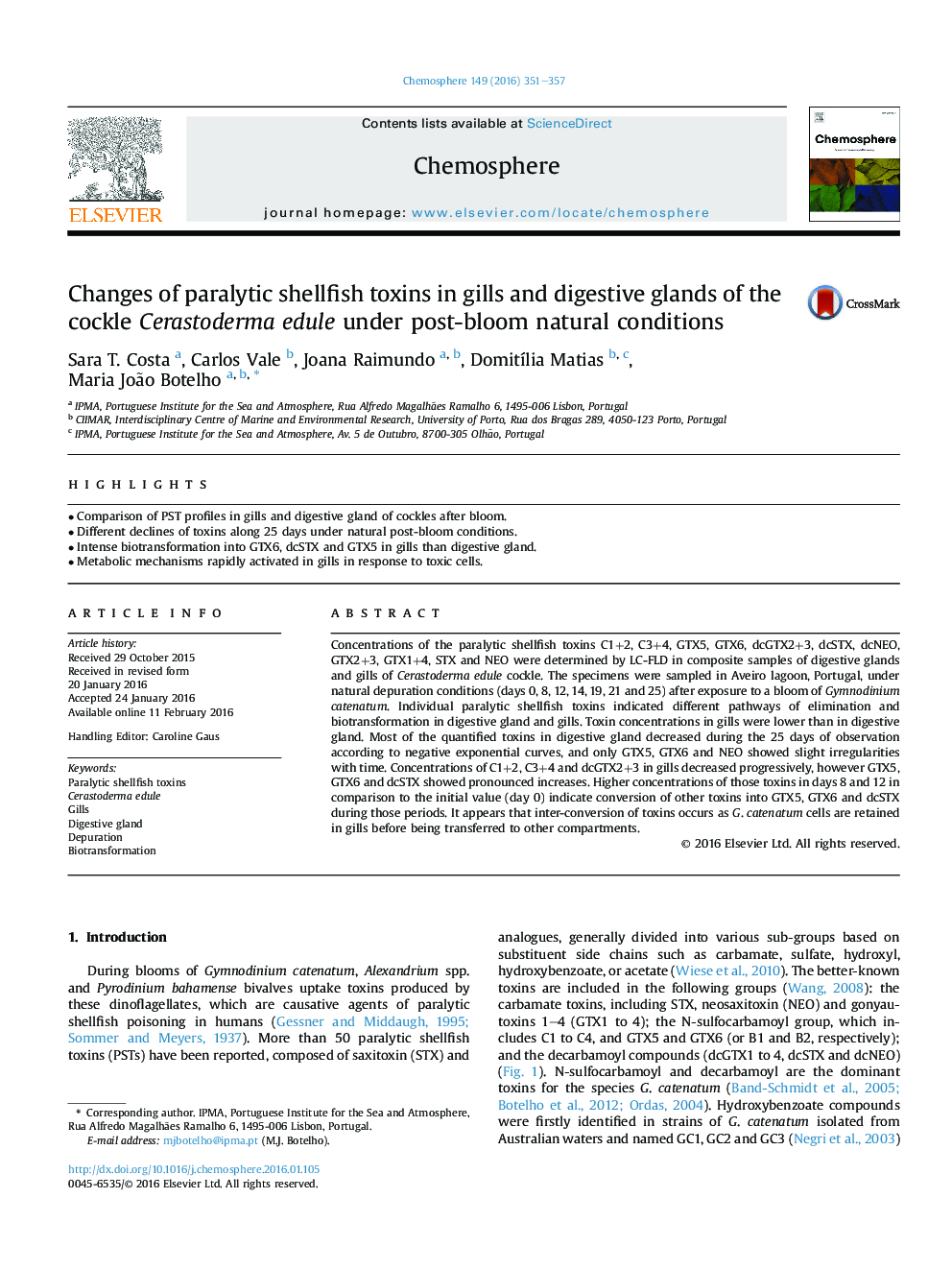| Article ID | Journal | Published Year | Pages | File Type |
|---|---|---|---|---|
| 4407894 | Chemosphere | 2016 | 7 Pages |
•Comparison of PST profiles in gills and digestive gland of cockles after bloom.•Different declines of toxins along 25 days under natural post-bloom conditions.•Intense biotransformation into GTX6, dcSTX and GTX5 in gills than digestive gland.•Metabolic mechanisms rapidly activated in gills in response to toxic cells.
Concentrations of the paralytic shellfish toxins C1+2, C3+4, GTX5, GTX6, dcGTX2+3, dcSTX, dcNEO, GTX2+3, GTX1+4, STX and NEO were determined by LC-FLD in composite samples of digestive glands and gills of Cerastoderma edule cockle. The specimens were sampled in Aveiro lagoon, Portugal, under natural depuration conditions (days 0, 8, 12, 14, 19, 21 and 25) after exposure to a bloom of Gymnodinium catenatum. Individual paralytic shellfish toxins indicated different pathways of elimination and biotransformation in digestive gland and gills. Toxin concentrations in gills were lower than in digestive gland. Most of the quantified toxins in digestive gland decreased during the 25 days of observation according to negative exponential curves, and only GTX5, GTX6 and NEO showed slight irregularities with time. Concentrations of C1+2, C3+4 and dcGTX2+3 in gills decreased progressively, however GTX5, GTX6 and dcSTX showed pronounced increases. Higher concentrations of those toxins in days 8 and 12 in comparison to the initial value (day 0) indicate conversion of other toxins into GTX5, GTX6 and dcSTX during those periods. It appears that inter-conversion of toxins occurs as G. catenatum cells are retained in gills before being transferred to other compartments.
